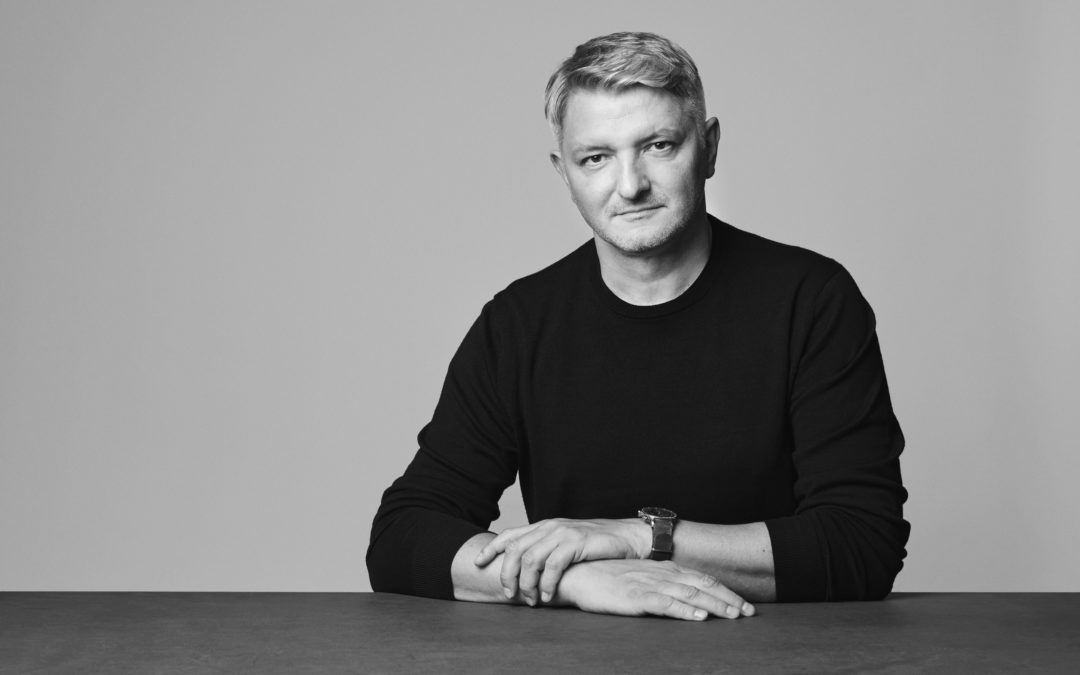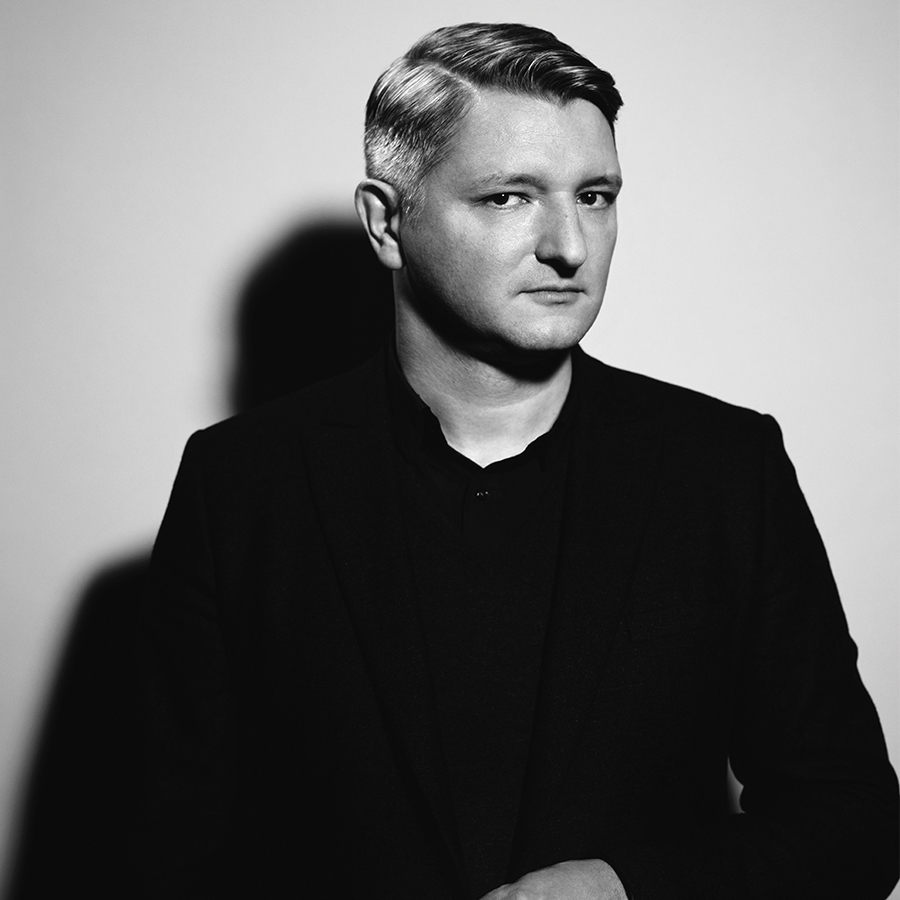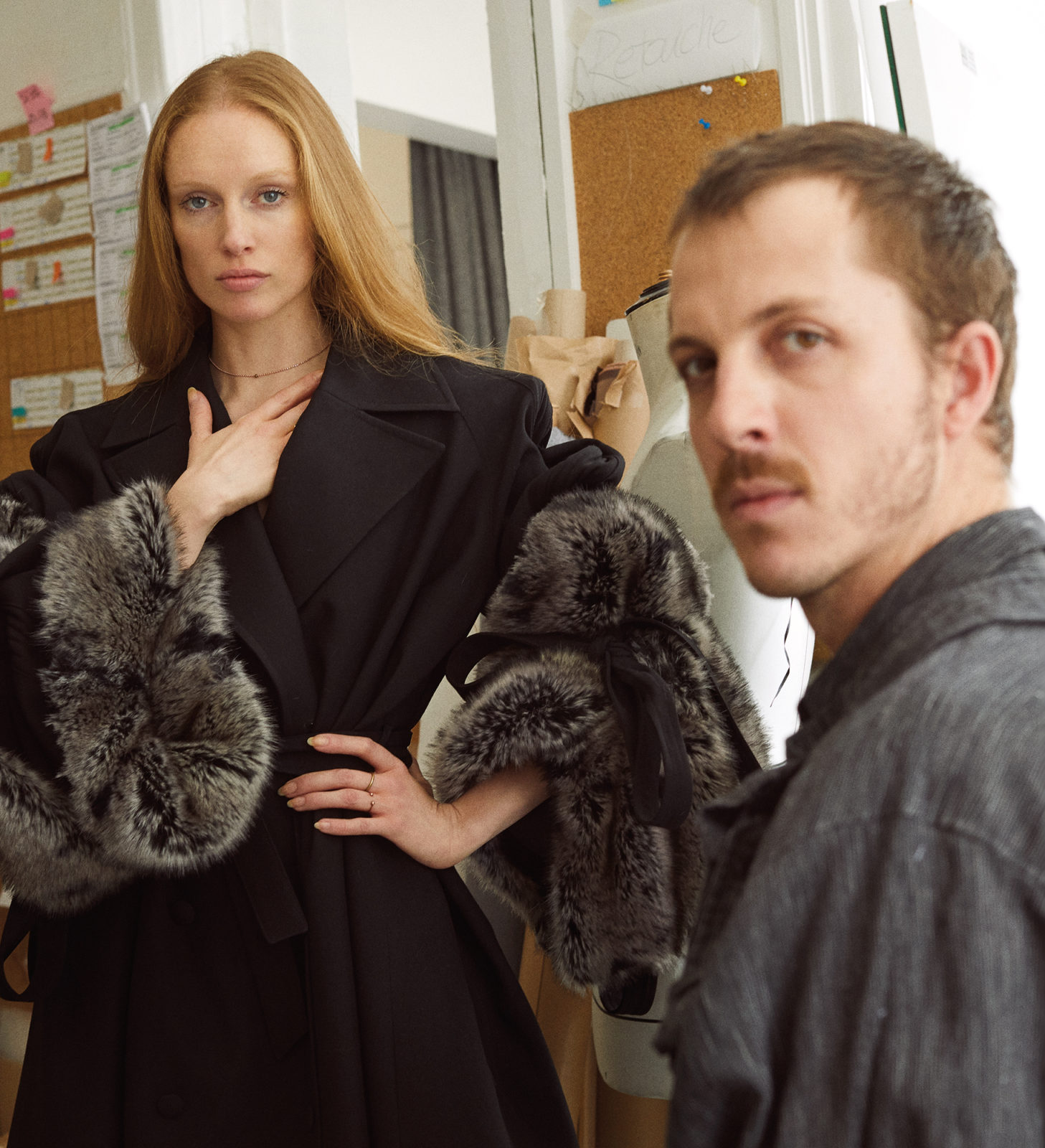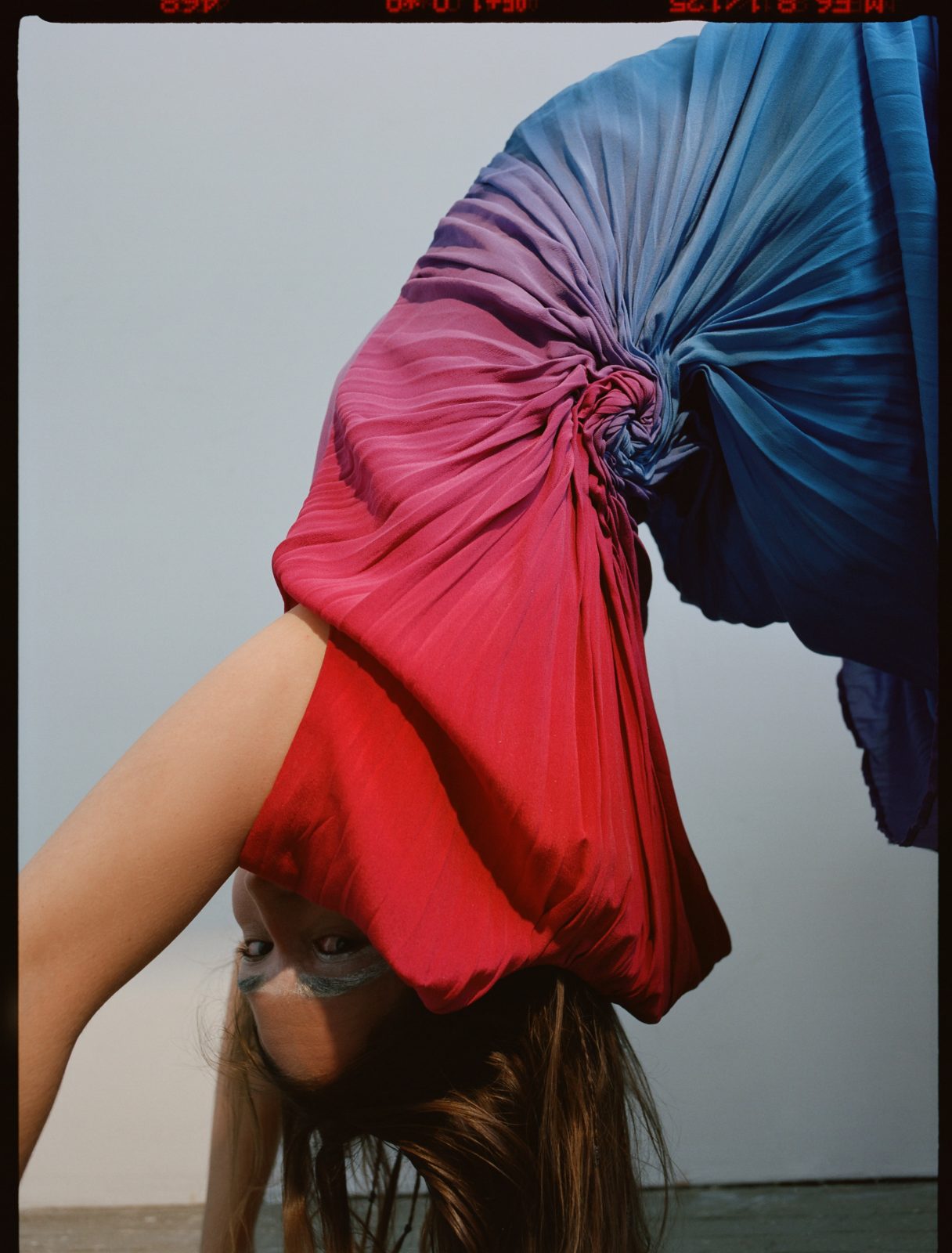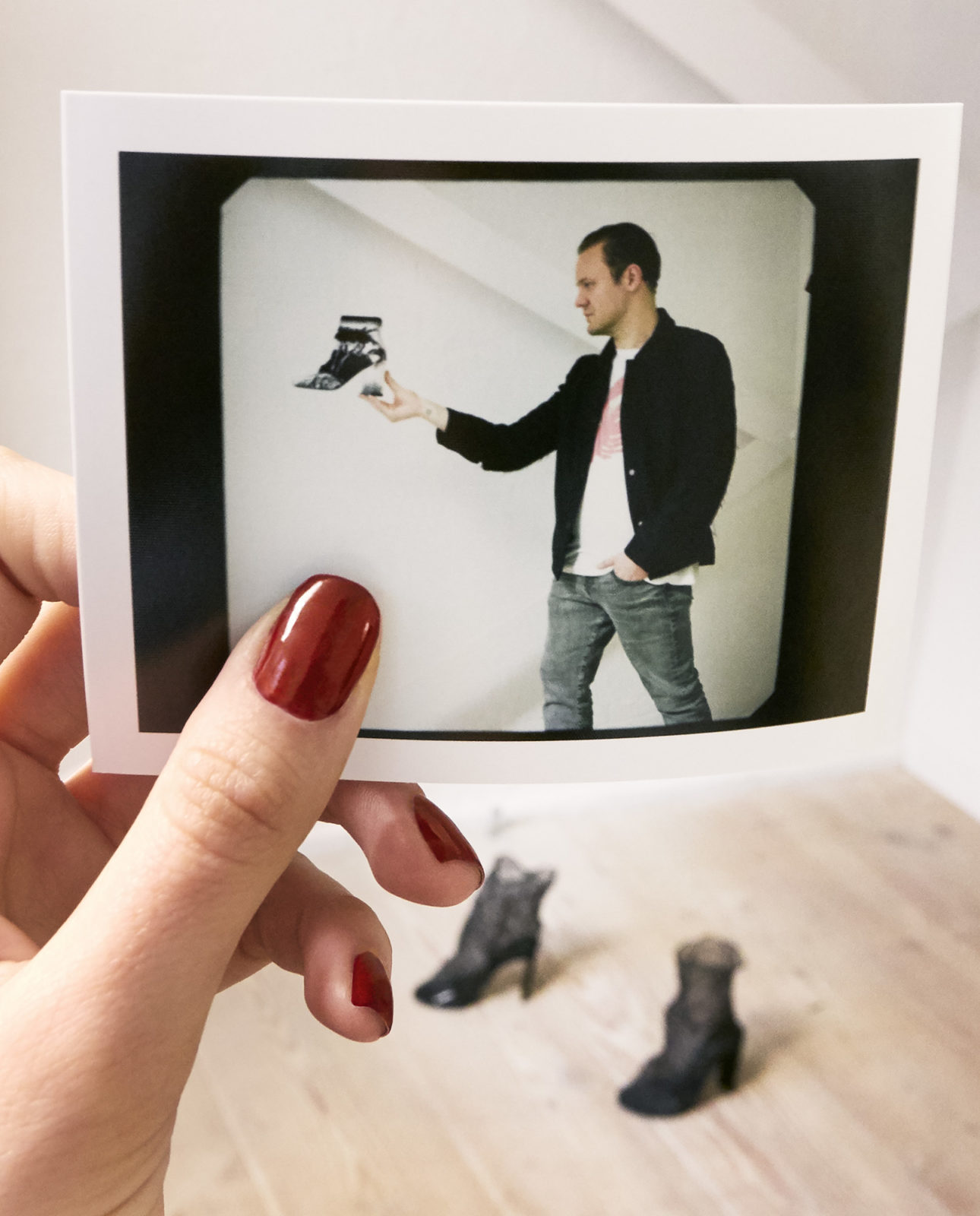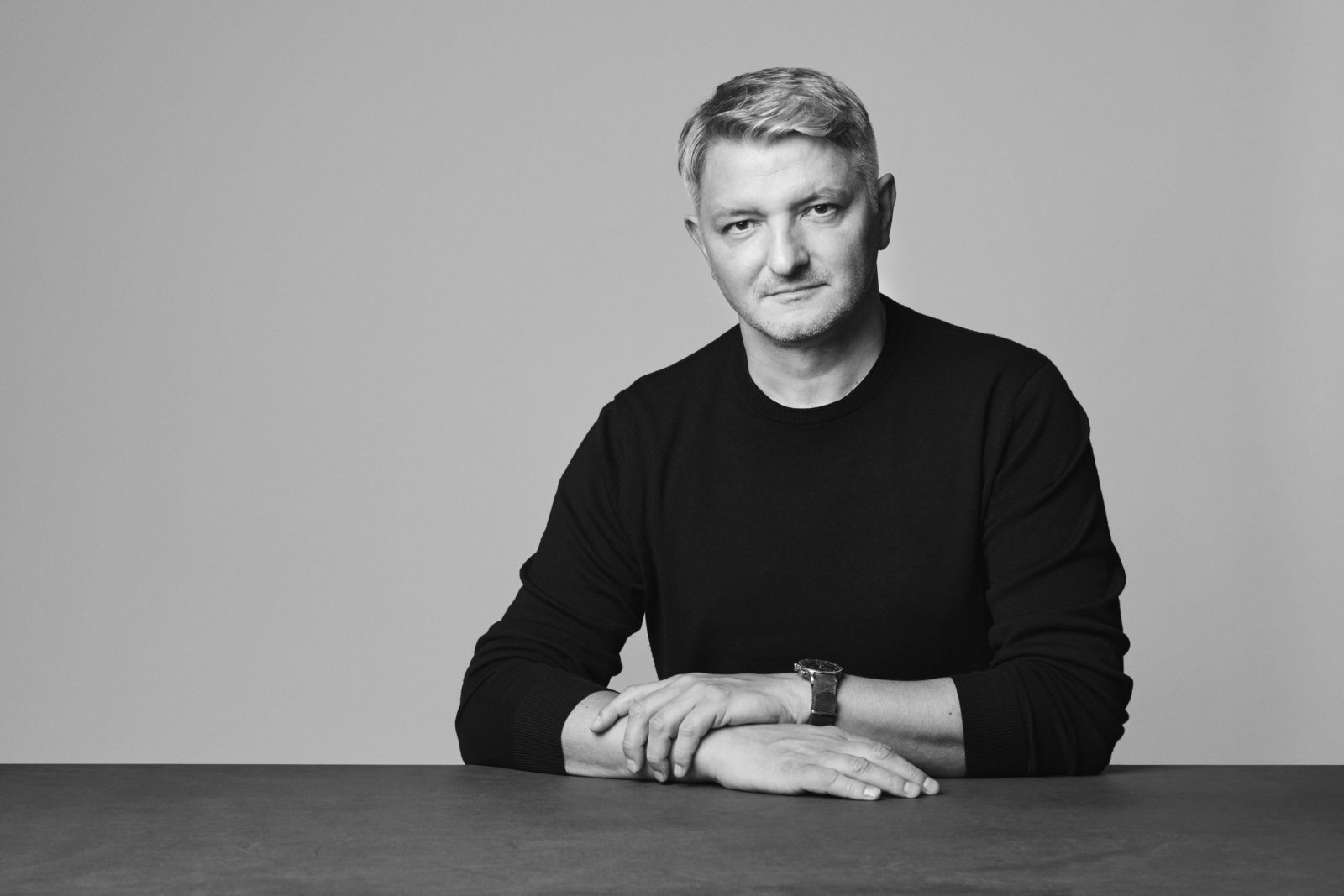
A MEETING WITH DIRK SCHOENBERGER
By Crash redaction
It’s been a bit more than a year since designer Dirk Schoenberger was appointed global creative officer of the German brand MCM – which was then mostly known for its luxurious luggage lines and accessories. For the first time, a key designer was stepping out to represent the brand and take it to new heights, pushing ready-to-wear at the forefront. Today we meet with Schoenberger to discover a bit more about his past working at Adidas, his new role at MCM and the incredible shifts in fashion which are changing strategies all around the world.
Can you talk about your new project with MCM and your role as global creative officer?
MCM was always something I remember as a kid. It had a certain image, it was about glamour, hedonism and Munich society. I grew up close to Cologne, so my world was a completely different story. But when Ms. Kim, the Chief Visionary Officer of MCM, approached me to join MCM it was like returning to this thing from my past. That said, when I arrived at MCM there was also this sense that the brand wasn’t seen by everyone in the same way that I saw it. There was this almost “schizophrenia” about it, as it was founded in Munich during the disco-fueled, hedonistic period of the late 1970s, and then later it was embraced in America by hip-hop culture and positioned as a luxury travel brand, and then in the 2000s it was Korean pop stars who made it something much more loud and eccentric again. There were so many excitingly competing visions of what MCM was! But Ms. Kim came to me and said she wanted to look back into the German roots of the brand, and this was super interesting to me because it felt like closing the circle. That’s why the first collection I worked on, for Spring/Summer 2020, had the title “From Munich Disco to Berlin Techno”.
So now you work from Berlin?
Yes. For the first time after living there almost thirteen years, I now work in Berlin. With Adidas, I worked in the south of Germany, so it’s a completely different energy to be drawing on. Berlin’s club scene has the same hedonistic approach as Munich had in the 70’s, but there’s a completely different look. That’s what inspired me to clash those two things: MCM’s brand heritage and the world of contemporary fashion design. Where I find this most interesting is in the brand’s travel DNA.
MCM started out with just travel items, right?
Yes, exclusively. Even when I joined, it was just about single pieces of clothing like leather jackets, a leather tracksuit and other comfortable garments that you could travel easily in. Now we are starting to build a full ready-to-wear collection, but we’re doing it step-by-step. I don’t want to make a collection with a hundred looks for a show. I want to keep it very focused. Now is not the time for exaggerated collections.
More like a capsule?
Exactly. We just finished Autumn/Winter 2020, and I’m already working on Spring/Summer 2021. I’m working on three collections at the same time (laughs). The idea of travel and movement has changed so much in recent years, now that we are constantly moving around. People today live such a nomadic lifestyle, so I really want to look into luxury, the idea of travel and functionality and make a modern statement with it.
So you also work on the luggage, not only on the clothes?
Yes, I work on everything. I have teams in Seoul, Milan and Berlin. The office in Milan was opened long before I joined. Berlin opened with me. Ms. Kim wanted to have a German office, so I built a team from scratch here. It doesn’t make my life necessarily easy, but it also reflects the brand being truly global. I don’t see MCM as simply a German brand or a Korean brand.
Ha, yes people don’t even know it’s a German brand in France!
I always tell people I see MCM as an airplane that started in Munich, touched down in America in the ’80s, then flew over to Korea and now is touching back down in Berlin. But I love bringing all those influences on board to create a truly global luxury brand. All the other luxury brands are very rooted in their respective country’s traditions, but MCM is at home everywhere!
MCM’s image is very young, I think. You don’t have a lot of luxury brands like that. How does that affect the design process?
Spending eight years at Adidas made me very keen on sportswear, but I also feel like the sportswear trend is fading out. A layering of tailoring and sport is becoming much more present in fashion these days. It’s all about functionality and construction, which fits very well into this idea of travel and creating something that is adapted to your needs.
These days, if you buy something, it’s because you need it.
Yeah, or once in a while you spend a lot of money on one exceptionally beautiful piece. It’s almost like a collectable. That is one thing that has changed from the way we used to consume fashion.
Is the French market important for you? You have a shop at the Galleries Lafayette.
Yes, the European market is now growing again.
For you or in general?
For us at MCM. The brand is huge in Asia and it’s been growing very steadily in Europe and America, but France isn’t always the easiest market to crack!
I think you have a message to deliver in France because the brand is not so well known yet.
Yeah, right now it’s handbags. It’s very driven by heritage materials and colors. That’s why it’s important not only on the business side – because we’re pretty well covered with the handbags – but also for our image and what we want to stand for.
And for the image, do you want to work with young photographers?
Definitely.
So you do the art direction yourself?
I do it together with an agency of course. But I give them a very clear brief of what my vision is for the season and what I want to achieve with it. It’s been a great collaboration.
You’ve recently started working with musicians?
Yes. For me, the Billie Eilish campaign was great. I really admire her, what she says, what she stands for. She’s a young woman – when we shot her she was sixteen or seventeen – so it was really interesting to work with her. It was more about what she stands for than her age. I also kept on telling my boss that if I find a woman who is fifty-five years old and has the same attitude, then I would cast her in the campaign. For me it’s not about age, it’s about who you are and how you show that to the world.
It’s about the personality and the fact that she is different.
And it’s not about fame either. I think it worked with Billie, because she has an image that fits the brand. But sometimes people tell me, “If we shoot this person it will work immediately”, and I always have to stop and ask myself if it’s actually credible. In these times, consumers know when a brand is bullshitting you. You can buy almost any celebrity today, but if it doesn’t connect then people can tell…
You could have Kylie Jenner.
Exactly.
Billie Eilish was a great choice. I remember my daughter told me about her when she was completely unknown and afterwards, she blew up. It’s crazy.
For the next campaign we worked with much younger people, no big celebrity names. Just young people with the right attitude and the right story. There are musicians, one skateboarder, one young designer a bit like a modern-day Dapper Dan… It’s very interesting to work with these people. They have a different message. That’s for Spring/Summer 2020.
You will be in print for this campaign?
Yes, but we also shot a lot of films.
You have to be global.
Yes. The communication has become very complex: print versus digital and out of home. Something that we didn’t really think about a few years ago was showing things now you need to have a holistic point of view and think about all the places that people will come into contact with your brand.
The strongest digital platforms come from magazines. That’s why it’s really print and digital connected together.
Totally. And what we thought a few years ago – that digital would mean the death of print – we now see that a lot of digital-only platforms didn’t succeed. We need to be in creative partnerships today. We can’t function in isolation. We can’t expect content to be created the way we want it and try to control it as a brand. I always think it’s interesting when you hand over your material to someone else and see what they do with it. It’s inspiring.
When you have a brand, you cannot stay in your ivory tower, so it’s more interesting to collaborate.
And you can also see when a brand is sitting in an ivory tower. You can see it in the show, when you don’t connect at all: nothing happens, either negative or positive. It’s just nothing. As I said, I love fashion, and there are some designers I admire a lot. But I’m scared at the same time because subconsciously, the things you like influence you all the time. I hate to be influenced by other people’s work (laughs). But I look at a lot of things because I’m still the fan boy that I used to be when I went to shows.
Brands like Comme des Garçons support a lot of young designers. They are especially open-minded, but some artistic directors are afraid to share their ideas.
Very honestly, when I joined Adidas, I didn’t think I was going to share anything. I learned very quickly how exciting it is to clash ideas, to hand someone the key to the castle and say: “Do something with this, come back to me with something I haven’t seen yet”. The Rick Owens partnership was amazing for me.
It’s vital to be open to the new generation. I come from contemporary art, so my point of view is different and I like mixing it with other younger voices.
Ms. Kim had the opportunity to rent a whole building in Ginza where our store was on the ground floor. Then she came to me and asked: “What do we do with the space we got?”. I thought we had three floors of retail space, but I wanted to use one of the floors as an art space. I found out pretty quickly that I didn’t have the time to really deal with talking to artists.
We have a space in Saint-Germain, called 22Visconti, where we organize exhibitions, and it’s a lot of work.
On our end, we found a solution. I don’t know if you know Johann König? He has the König Gallery here in Berlin. I’ve known him for a while and he also knows Ms. Kim. I had told Ms. Kim before that I really wanted to get started with a gallery for the art space. And when she met him in Seoul, he said: “Let me do it”. Now we just opened two weeks ago. One floor in this nine-story building has a Juergen Teller exhibition, which is really good. We’re going to continue until the end of next year. König has a very strong roster of female artists, so I’m excited about that. It opens a conversation and dialogue between us as a brand and the world of contemporary artists. It also repositions us in regard to the outside world and gives the brand added substance.
As a brand today, you have to offer something other than just clothes. You need ideas, projects… It’s a lot of work. (laughs)
Yes totally! But you need to do it because otherwise you are just making products. Nowadays you need some kind of cultural context: why you do what you do. Just producing yet another collaboration is also not enough anymore. Just like with celebrities, you can also buy any collaboration you want today.
There are too many collabs today.
Absolutely. And there are too many meaningless collabs as well. As a brand, you can’t depend only on that. You lose your identity. A few weeks ago we launched the Bathing Ape x MCM collab, which was extremely well received. In America, it sold out within minutes. It was crazy. It also sold out in Europe within hours. It sold out in Asia, too. I’m working on some other collaborations for next year as well.
Do you know what your next exhibition will be?
We have a few artists lined up but not confirmed: Anselm Reyle, Alicja Kwade, Rinus Van de Velde and Norbert Bisky.
Are you thinking of doing something in Paris?
Yes, we are always looking for spaces. Tell me, where would you open a store in Paris right now? It’s not so easy.
I love the Left Bank, that’s where I live now. But I hear that business is not so good on the Left Bank. It’s great because you still have some book shops and galleries. It’s really cool.
It’s more the cliché spirit of Paris, but I love Left Bank as well.
It’s still charming.
It’s funny that tourists don’t really cross the bridge that much. It’s not corrupted by tourists as much as the Right Bank.
Not as much, but it’s starting. We organized an exhibition called “The Shining” in a Left Bank hotel called La Louisiane. It’s a very special hotel because artists like Cy Twombly and Kounellis always stayed there while in Paris. It’s a very cheap hotel, a bit like the Chelsea Hotel. Miles Davis also lived there. We organized a show for the anniversary of the film “The Shining”. We booked one floor of the hotel and we invited artists to make projects based on the film. This place is very secret, it’s the secret Left Bank you know… You can’t go into a district that’s too obvious for you. If it’s obvious, it’s boring.
Absolutely! We don’t necessarily need to be next to where everybody else is. It it about exploring new territories and areas in cities. For the last two months I was on the road and was only four days in the Berlin office it is very inspiring.
You’re on every field!
Yes, I’m very multifunctional! (laughs). Of course, you can just stick to the top of the pyramid and not care about the rest, but maybe I’m too German for that: I want to know everything.
Do you have a big staff?
I have three design teams. Then a team in New York who are part of the digital visuals, and some people in Hong Kong for the retail environment.
So it’s completely split.
It’s also due to the owner’s attitude. She really likes this type of diversity. It’s not making her or my life any easier, but she believes strongly in getting different voices at the table. Sometimes we need to choreograph these voices to produce a clear vision, and that’s my job.







